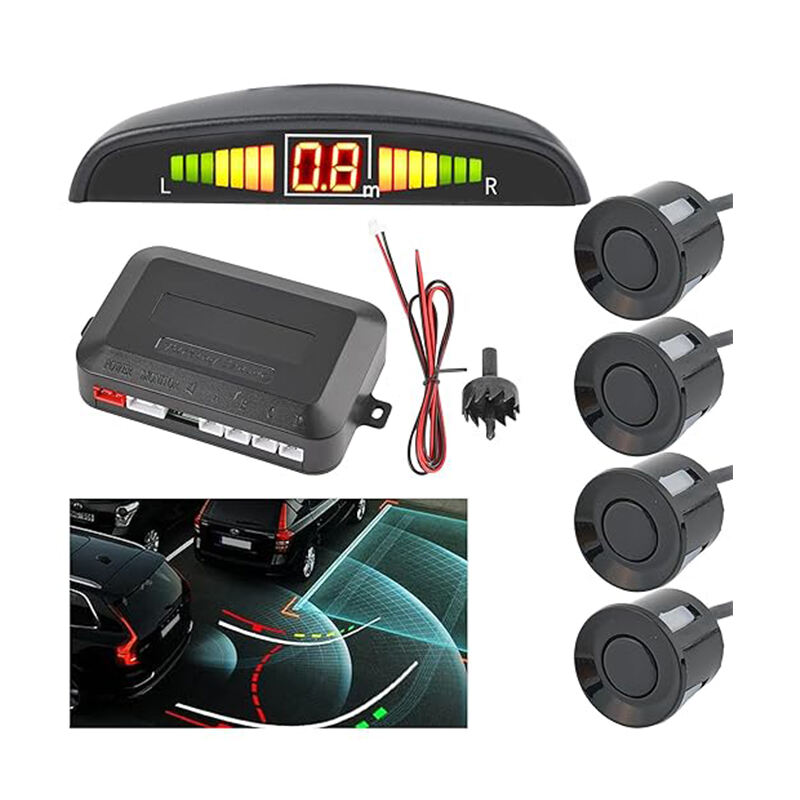Understanding Modern Vehicle Safety Technology
The evolution of automotive technology has brought us remarkable innovations that make driving safer and more convenient than ever before. Among these advancements, car proximity sensors have emerged as a groundbreaking solution for preventing parking accidents and protecting vehicles from costly damages. These sophisticated devices serve as an extra set of eyes, alerting drivers to nearby obstacles and helping them navigate tight spaces with confidence.
The Technology Behind Proximity Sensing Systems
Types of Sensor Technologies
Car proximity sensors utilize various technologies to detect obstacles and measure distances. Ultrasonic sensors emit high-frequency sound waves that bounce off nearby objects and return to the sensor, allowing the system to calculate precise distances. Electromagnetic sensors create a magnetic field around the vehicle and detect disturbances when objects enter this field. Some advanced systems also incorporate radar technology for enhanced detection capabilities in various weather conditions.
These different sensor types work in harmony to provide comprehensive coverage around the vehicle. While ultrasonic sensors excel at close-range detection, electromagnetic sensors offer reliable performance regardless of material type, and radar sensors can detect objects at greater distances and through adverse weather conditions.
Integration with Vehicle Systems
Modern car proximity sensors are seamlessly integrated with the vehicle's central computer system. They connect to visual displays, audio alerts, and in some cases, automatic braking systems. This integration ensures that drivers receive immediate feedback through multiple channels, making the parking process more intuitive and safer.
The sensor data is processed in real-time, providing instant updates as the vehicle's position changes relative to surrounding objects. This continuous monitoring allows for dynamic response to moving obstacles and helps prevent accidents even in complex parking scenarios.
Benefits of Proximity Sensor Systems
Enhanced Safety Features
Car proximity sensors significantly reduce the risk of parking-related accidents by providing drivers with accurate distance information. They are particularly valuable in detecting low obstacles that might be outside the driver's direct line of sight, such as bollards, curbs, or children's toys. This enhanced awareness helps prevent both minor bumps and potentially serious accidents.
The system's ability to detect moving objects adds another layer of safety, especially in busy parking lots where pedestrians or other vehicles might suddenly appear. This proactive approach to safety has made car proximity sensors an indispensable feature in modern vehicles.
Cost Savings and Prevention
While the initial investment in car proximity sensors might seem significant, the long-term cost savings are substantial. By preventing even minor collisions and scratches, these systems help avoid expensive repair bills and maintain the vehicle's resale value. Insurance companies often offer reduced premiums for vehicles equipped with proximity sensors, recognizing their role in accident prevention.
Regular maintenance costs are also minimized as the sensors help protect vulnerable parts of the vehicle from damage. This preventive approach extends the lifespan of bumpers, body panels, and other components that are frequently damaged during parking maneuvers.

Installation and Maintenance Considerations
Professional Installation Requirements
For optimal performance, car proximity sensors should be installed by qualified professionals who understand the complex integration requirements. The installation process involves careful positioning of sensors, proper wiring, and calibration to ensure accurate readings. Professional installers can also recommend the most suitable sensor configuration based on the vehicle's size and typical usage patterns.
The installation process typically includes thorough testing to verify sensor coverage and response accuracy. This ensures that there are no blind spots in the detection system and that all alerts function as intended.
Ongoing Maintenance Needs
While car proximity sensors are designed for durability, they do require regular maintenance to maintain optimal performance. This includes keeping sensors clean from dirt and debris, checking wiring connections, and periodically verifying calibration accuracy. Environmental factors like extreme temperatures and harsh weather conditions can affect sensor performance, making routine checks essential.
Most modern systems include self-diagnostic capabilities that alert drivers to any malfunctions or required maintenance. Regular software updates may also be available to improve system performance and add new features.
Advanced Features and Future Developments
Smart Parking Assistance
The latest car proximity sensor systems go beyond simple obstacle detection. They now incorporate smart parking assistance features that can identify suitable parking spaces and guide drivers through the entire parking process. These advanced systems use multiple sensors and cameras to create a comprehensive view of the parking environment.
Some systems can even perform semi-autonomous parking maneuvers, requiring minimal input from the driver. This technology continues to evolve, making parking safer and more accessible for drivers of all skill levels.
Integration with Autonomous Systems
Car proximity sensors play a crucial role in the development of autonomous driving technology. These sensors provide essential data for self-parking features and autonomous navigation in parking lots. As vehicle automation continues to advance, proximity sensors will become even more sophisticated, offering enhanced detection capabilities and improved integration with other vehicle systems.
Future developments may include AI-powered prediction systems that can anticipate potential obstacles and adjust vehicle behavior proactively. This evolution will further reduce parking-related incidents and improve overall vehicle safety.
Frequently Asked Questions
How accurate are car proximity sensors in detecting small objects?
Car proximity sensors are highly accurate and can detect objects as small as a few inches in size. Modern sensor systems typically have a detection accuracy of within 1-2 centimeters, making them reliable for identifying even minor obstacles during parking maneuvers.
Do weather conditions affect proximity sensor performance?
While extreme weather conditions can impact sensor performance, modern car proximity sensors are designed to function effectively in most weather scenarios. Multiple sensor types working together help maintain reliable detection even in challenging conditions like rain or snow.
Can proximity sensors be added to older vehicles?
Yes, aftermarket car proximity sensor systems can be installed on most vehicles. However, it's important to choose a high-quality system and have it professionally installed to ensure proper integration and reliable performance.



